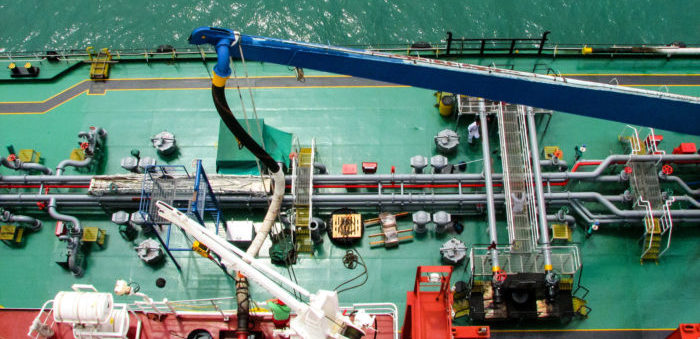ICS warns that the maritime industry is facing a fragmented future zero-emission fuel landscape and ship operators’ investment decisions are being stalled by a lack of clarity over where alternative fuels will be available in ports globally.
As highlighted in the ICS report, Fuelling the Fourth Propulsion Revolution, shipping will require access to vast amounts of zero carbon emission fuels, but will play a fundamental role in delivering these fuels globally and act as an enabler for governments and industries to achieve their climate targets.
[smlsubform prepend=”GET THE SAFETY4SEA IN YOUR INBOX!” showname=false emailtxt=”” emailholder=”Enter your email address” showsubmit=true submittxt=”Submit” jsthanks=false thankyou=”Thank you for subscribing to our mailing list”]
For this reason, it is vital that governments and port authorities account for shipping’s future fuel needs, as well as their own zero carbon emission trading needs, in their port investment and infrastructure plans.
Such concerns are being explored by the World Port Climate Action Programme (WPCAP)’s Working Group on Sustainable Fuels. The programme partners are developing a new tool to assist ship operators and other stakeholders to assess the ability of individual ports to accommodate vessels for specific alternative fuels.
The hope is that, if for example, a shipowner has vessels in its fleet powered by ammonia, while others are powered by biofuel, such a tool would provide more precise and up to date information about where vessels can bunker zero emission fuels in the future, helping to plan port calls and avoid the time and costs of re-routing to other ports to re-fuel.
Cees Boon from the Port of Rotterdam, who spearheaded development of the new tool explains:
The considerations for a port call from a vessel using ammonia would be different to that for a vessel looking to bunker hydrogen or an e-methanol ship that needs repairs
The tool, named Port Readiness Level for Alternative Fuels for Ships (PRL-AFS), was designed using a similar nine-level format to the widely accepted Technology Readiness Level (TRL) developed by NASA. The framework will track the progress of ports and their ability to offer port call or bunkering services that would lead to its eventual status to accommodate vessels using specific alternative fuels, such as hydrogen or ammonia.
The WPCAP Working Group for Sustainable Fuels is also creating guidance for the considerations at each of the nine levels, including safety, governance, social engagement, and commercial factors.
The operating landscape for ports and vessel operators is becoming increasingly complex and there is an urgent need for clarity about any limitations around port calls by vessels using alternative fuels
Namrata Nadkarni, chair of the Sustainable Fuels working group tells ICS, adding that “operators want to know whether their vessel will be able to call at a particular port, the services they can expect at individual terminals, and if the port in question intends to expand these services in the future.”
The PRL-AFS and accompanying visualisation matrix will communicate this information at a glance, and will facilitate route planning for operators using exiting as well as future fuels.
WPCAP’s Sustainable Fuels working group will be stress testing the PRL-AFS and accompanying guidance in the coming months and will be seeking stakeholder feedback across the decarbonisation value chain. It will also assess the applicability of the PRL-AFS tool for ports offering maintenance, repair and industrial services.






























































